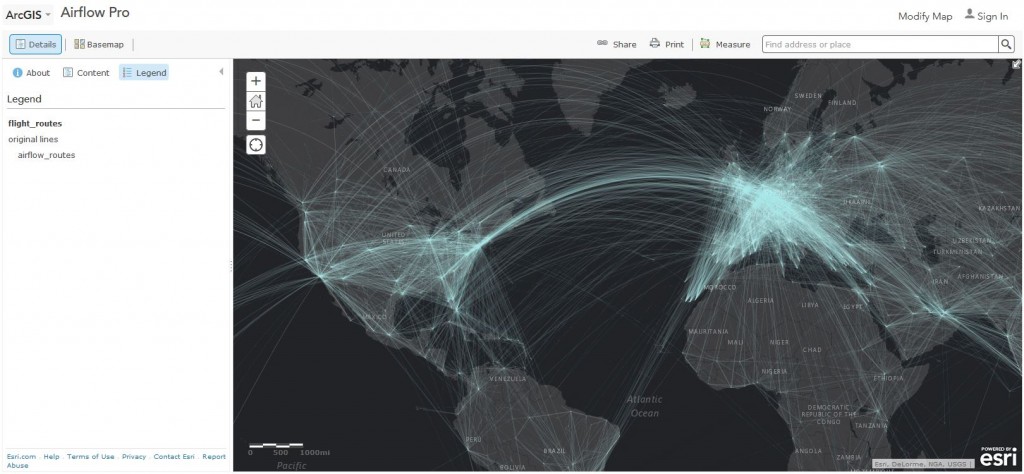From the dawn of humankind, man has sketched crude abstractions of geography on cave walls and rocks. These early maps documented and communicated important geographic knowledge our ancestors needed to survive.
Fast-forward to 2015. The world has become significantly more complex than it was for our early ancestors. But luckily we now have information technologies at our disposal to help us solve the increasingly complex problems. It’s a natural fit to apply these powerful information technologies to the serious environmental, geographic, and social problems we face. And thus the modern map was born.
Modern maps can be used to tell stories, and apps provide the user experience through which we work with maps and share them. Here are six things that modern maps do to help us address the complex problems we face today.
—–
1. Maps communicate and foster understanding
GIS maps provide windows into useful information. Many kinds of descriptive information can be stored with the map and accessed on demand for individual features in your map.
In this map, you can click on any voting precinct in the map to view its report. For example, you can investigate the relationship between ethnicity and income in presidential voting patterns.
—–
2. Maps tell stories
Maps provide a powerful way to tell many kinds of stories. Story maps make it easy to tell rich, map-based stories in the form of self-contained web apps.
These web apps combine intelligent web maps with text, photos, video, and sound to elucidate interesting topics, like this map of endangered languages of the world linked to audio from native speakers.
—–
3. Maps can display dynamic information that changes over time
In GIS, many maps can dynamically display time frames, much like a weather map.
This map displays snow cover from NASA’s next generation Blue Marble imagery. Click the play button to animate the seasonal imagery over the past 12 months.
—–
4. Maps help in finding patterns in mountains of data
Although it may seem counter-intuitive, sometimes adding thousands or millions of individual features or events helps a more coherent picture to emerge, one that simply couldn’t be seen any other way.

There can be value in adding mapping detail in order to give clarity to an overall view of your data, and sometimes this is referred to as “data art.”
—–
5. Maps help you perform analysis
Maps can be used to enable geographic analysis. GIS maps combine powerful visualization with a strong analytic and modeling framework.

Just as you can use each map layer as a window into information about features, you can use the map as a window into sophisticated analytical tools and results.
—–
6. Maps can be used to compile data
Sometimes a map is the container or capturing device.

This simple map runs on an iPad. A team of arborists in Beverly Hills, California, uses it to add to and update a database of every tree in the city.
—–
 This post is excerpted from my new book, The ArcGIS Book: 10 Big Ideas about Applying Geography to Your World. The twin goals of this book are to open your eyes to what is now possible with Web GIS, and then spur you into action by putting the technology and deep data resources in your hands. The book is available through Amazon.com and other booksellers, and is also available at www.TheArcGISBook.com for free.
This post is excerpted from my new book, The ArcGIS Book: 10 Big Ideas about Applying Geography to Your World. The twin goals of this book are to open your eyes to what is now possible with Web GIS, and then spur you into action by putting the technology and deep data resources in your hands. The book is available through Amazon.com and other booksellers, and is also available at www.TheArcGISBook.com for free.



